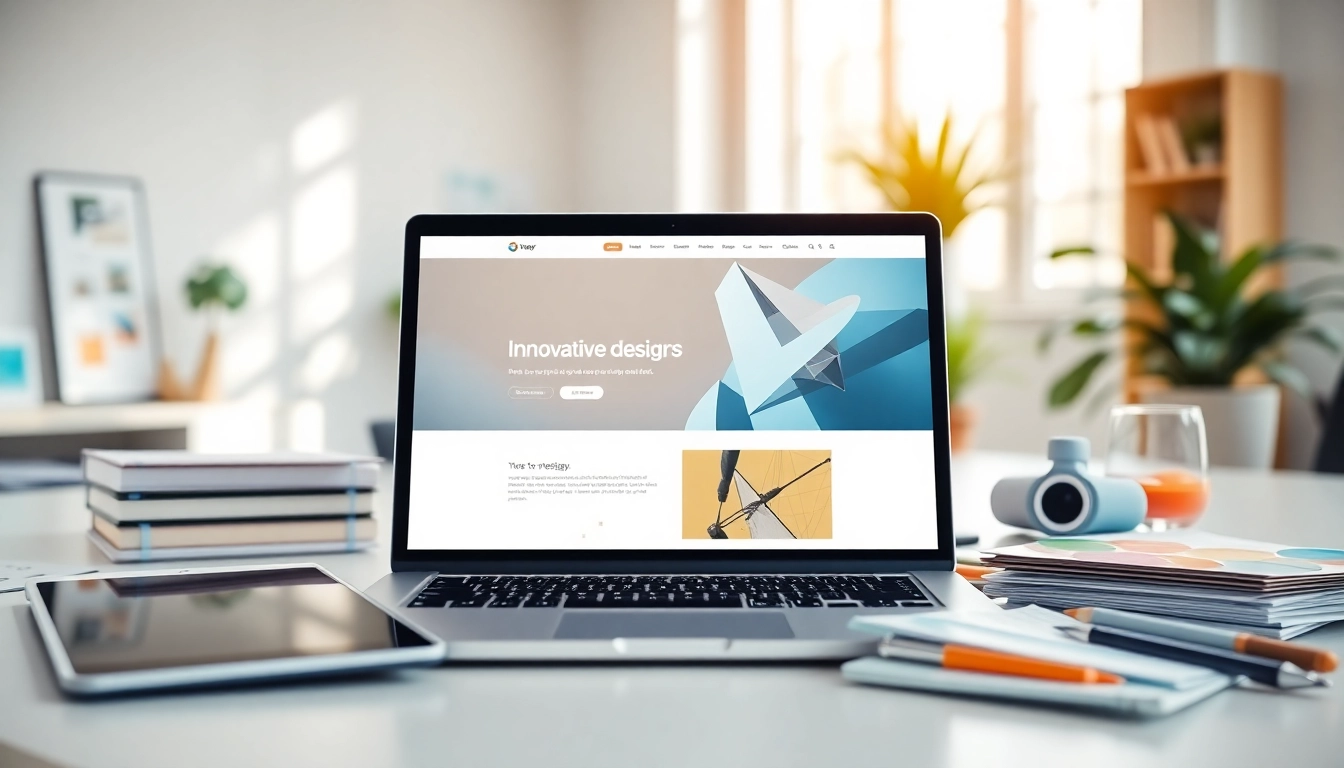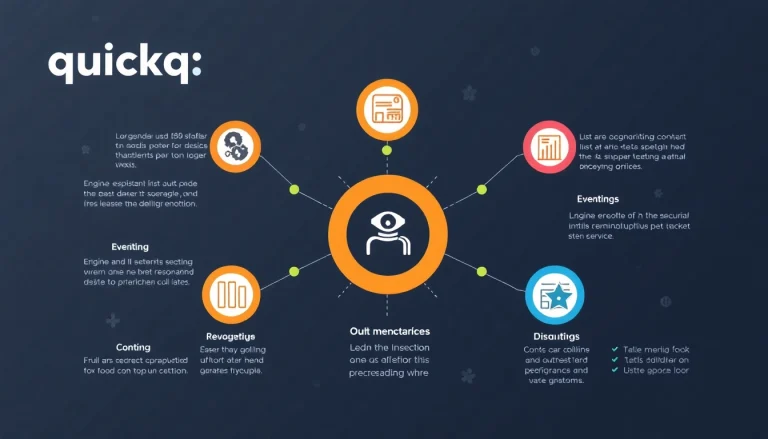Understanding the Basics of Website Design
In today’s digital era, website design serves as the cornerstone of any online presence. It is not only about aesthetics but encompasses a wide range of skills, principles, and practices that contribute to the creation and maintenance of websites. This comprehensive guide will delve into the importance of website design, covering fundamental concepts, best practices, and actionable insights to elevate your web project.
What is Website Design?
Website design refers to the multifaceted process of conceptualizing and creating a website. It includes a variety of elements ranging from layout and structure to color choice, typography, and graphics. At its core, good website design aims to provide users with an optimal experience through aesthetically pleasing and functional interfaces. This involves not only the visual aspects but also ensuring usability and accessibility for all users. A well-designed website should fulfill its intended purpose effectively, whether it’s to inform, entertain, sell products, or provide a service.
Essential Elements of Effective Website Design
To create an effective website, several key elements must be considered:
- Visual Hierarchy: This dictates how information is presented on the page, guiding users through content in a logical manner.
- Navigation: Intuitive navigation is essential for enhancing user experience. Clear pathways allow users to find information quickly and easily.
- Content: High-quality, relevant content is critical. It should provide value and keep users engaged.
- Responsiveness: A design that adapts to various devices is crucial, as a significant amount of web traffic comes from mobile sources.
- Accessibility: Designing with inclusivity allows all users, including those with disabilities, to interact with the website effectively.
Importance of User Experience in Website Design
User experience (UX) is paramount in determining a website’s effectiveness. A website with an excellent UX ensures that users can navigate the interface without confusion or frustration. Poor user experience can lead to high bounce rates, decreased visitor retention, and a negative perception of the brand. Key factors influencing user experience include:
- Loading Speed: Users expect web pages to load quickly. Slow sites can deter potential customers.
- Responsive Design: A design that works seamlessly across all devices enhances user satisfaction.
- Clarity: Information presented clearly helps users absorb content without struggle.
Choosing the Right Design Aesthetics
Color Psychology in Website Design
Colors evoke emotions and can significantly impact user behavior. Understanding color psychology is crucial for selecting an appropriate color scheme for your website:
- Blue: Conveys trust and dependability, making it a popular choice for corporate websites.
- Red: Represents excitement and urgency, often used in sales promotions.
- Green: Associated with growth and health, fitting for organic or natural products.
- Yellow: Evokes cheerfulness and optimism, though it should be used sparingly.
Typography: Selecting Fonts for Impact
Typography goes beyond mere legibility; it is about establishing a brand’s tone and guiding users through content. Here are key considerations:
- Readability: Choose fonts that are easy on the eyes, especially for body text.
- Hierarchy: Utilize different font sizes, weights, and styles to create a visual hierarchy that guides the reader’s eye.
- Consistency: Stick to a limited number of font families to maintain a clean and cohesive look.
Imagery and Graphics for Website Design
Visual elements play a vital role in capturing user attention and conveying the message effectively. High-quality images and graphics can:
- Enhance Understanding: Use infographics and charts to make complex information easier to digest.
- Build Trust: Authentic images portraying the real-life application of products can establish credibility.
- Create Connection: Imagery that reflects the target audience’s identity fosters a deeper engagement.
Responsive Website Design Techniques
Understanding Mobile Optimization
With an increasing number of users accessing websites from mobile devices, mobile optimization is no longer optional. This practice involves adjusting content and design to provide an optimal viewing experience on smaller screens. Key strategies include:
- Flexible Grid Layouts: Use CSS grid or flexbox to create a responsive layout that adjusts to various screen sizes.
- Viewport Meta Tag: Implementing this tag helps browsers to render a page that is tailored for the device’s screen size.
- Touchscreen Consideration: Ensure buttons are easily clickable and elements are spaced appropriately for touch interactions.
Creating Fluid Layouts
A fluid layout is designed to resize according to the user’s screen, enhancing the overall usability of a website. To create effective fluid layouts, consider:
- Percentage-Based Widths: Instead of fixed widths, use percentages to allow elements to adjust dynamically with screen size.
- Media Queries: CSS media queries enable you to apply different styles based on device characteristics, such as width or resolution.
Performance Optimization for All Devices
Performance optimization not only improves user experience but also benefits search engine rankings. Strategies include:
- Image Optimization: Compress images without sacrificing quality to improve load times.
- Minification: Reduce the size of CSS, JavaScript, and HTML files to speed up page loading.
- Content Delivery Networks (CDNs): Utilize CDNs to deliver content more efficiently by storing copies close to users’ locations.
Integrating Functionality in Website Design
Essential Features for User Engagement
Incorporating functional features into your website design can elevate user engagement. Some essential features include:
- Search Functionality: Allow users to quickly find what they’re looking for, enhancing usability.
- Forms: Interactive forms for inquiries or subscriptions can create opportunities for meaningful user engagement.
- Social Media Integration: Facilitating ease of sharing on social platforms can increase visibility and engagement.
Navigation Best Practices in Website Design
Effective navigation should be user-friendly and straightforward. Here are best practices to consider:
- Consistency: Use a consistent navigation structure throughout the website to help users familiarize themselves rapidly.
- Descriptive Labels: Ensure navigation labels are clear and accurate to give users a clear idea of where they will land.
- Breadcrumbs: Offer users a path back to their earlier steps in navigating the site, enhancing their experience.
Effective Call-to-Action Strategies
Call-to-action (CTA) elements are crucial for driving user interaction. To maximize their effectiveness, consider:
- Visibility: CTAs should stand out visually, using contrasting colors and larger fonts.
- Clarity: The message should be explicit, telling users exactly what action to take (e.g., “Get Started” or “Subscribe Now”).
- Placement: Position CTAs strategically throughout the site, ensuring they align with user intent and context.
Evaluating and Improving Your Website Design
Metrics to Analyze Website Performance
Analytics play a vital role in assessing a website’s performance. Key metrics to measure include:
- Traffic Sources: Understand where your visitors are coming from to optimize marketing strategies.
- Bounce Rate: A high bounce rate could indicate a lack of engagement or relevance.
- Page Load Time: Monitor loading times and aim for optimization to reduce user frustration.
A/B Testing for Design Optimization
A/B testing involves comparing two versions of a webpage to determine which performs better. This can lead to informed design decisions based on actual user behavior. To implement A/B testing:
- Define Goals: Establish what metric you are testing (e.g., click-through rates, conversion rates).
- Test Variations: Create variations of elements to see which performs better.
- Analyze Results: Utilize analytics tools to derive insights from the results and apply them to your design strategy.
User Feedback: A Tool for Continuous Improvement
User feedback is invaluable for ongoing website improvement. Encourage feedback through:
- Surveys: Deploy surveys to gather user opinions and suggestions.
- Usability Tests: Observing users as they interact with the site can highlight areas for improvement.
- Analytics: Combine quantitative data with qualitative data from user feedback for comprehensive insights.



















